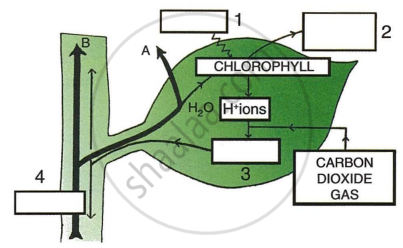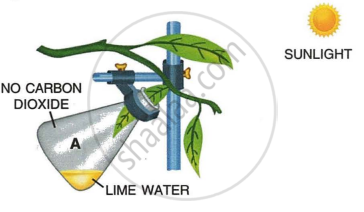Advertisements
Advertisements
Question
Given below is the representation of a certain phenomenon in nature. With four organisms 1-4.

Name any one organism that could be shown at No .5
Solution
Hawk, eagle
APPEARS IN
RELATED QUESTIONS
Fill in the blank:
Land plants obtain their carbon dioxide from the ______.
All life owes its existence to chlorophyll. Give reason.
Given below is a schematic diagram to illustrate some aspects of photosynthesis.
- Fill up the gaps, in blank spaces (1-4), by writing the names of the correct items.
- What phenomenon do the thick arrows A and B indicate?

Given alongside is the diagram of an experimental set-up:

- What is the objective of this experiment?
- Will it work satisfactorily? Give reason.
- What alteration(s) will you make in it for obtaining expected result?
- Would you take any steps before starting the experiment? Describe this step and explain its necessity.
A potted plant was taken in order to prove a factor necessary for photosynthesis. The potted plant was kept in the dark for 24 hours. One of the leaves was covered with black paper in the centre. The potted plant was then placed in sunlight for a few hours.
Write a balanced chemical equation to represent the process of photosynthesis.
The diagram below shows two test-tubes A and B. Test-tube A contains a green water plant. Test-tube B contains both a green water plant and a snail. Both test-tubes are kept in sunlight. Answer the questions that follow:

(a) Name the physiological process that releases the bubbles of oxygen.
(b) Explain the physiological process as mentioned above in (a).
(c) What is the purpose of keeping a snail in test-tube B?
(d) Why does test-tube B have more bubbles of oxygen?
(e) Give an example of a water plant that can be used in the above experiment.
(f) Write the overall chemical equation for the above process.
Name the following:
The site of light reaction in the cell of a leaf.
Choose the Odd One Out
Choose the Odd One Out
Which of the following is used to remove chlorophyll from the leaves?
